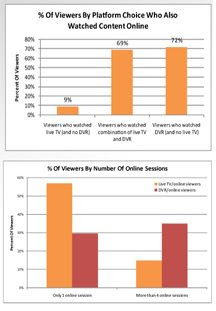
There are approximately 300,000 children in the United States that have some form of arthritis, which is diagnosed almost anytime between the ages of 2 and 16. The are several types of juvenile rheumatoid arthritis (JRA) ranging from systemic JRA, which affects the whole body, to oligoarticular JRA, which affects four or fewer joints.
My daughter was diagnosed last year. She has juvenile rheumatoid arthritis in both ankles, one hand, and some limited range of motion in other joints. Still, we're grateful she was diagnosed, as Nevada is only one of nine states in the U.S. that doesn’t have a pediatric rheumatologist.
Arthritis and BloggersUnite.org
When you consider all of the causes, ranging from AIDS to World Hunger, arthritis doesn't really register on a large scale. But social media, unlike SEO, is not all about the numbers. It's about engagement, connecting people with common interests whether those interests are altruistic or something as simple as a celebrity. It's about how information and action spreads.
For example, it helped one blogger find a greater forum for reporting on Arthritis Walk Atlanta, which was held today, or a few more bloggers interested in writing about Juvenile Arthritis and Kelly Rouba's new book, in which she shares her own story and the stories of various kids, teens and young adults who suffer from arthritis.
Awareness is extremely important for kids and parents because the earliest symptoms are so easily dismissed or misdiagnosed. Very often, the symptoms only include a light rash and swelling around a single joint, not all that dissimilar from a common sprain or suspected bug bite. In fact, last year, even Jennie Garth, a former "Beverly Hills, 90210" actress, shared how a "mysterious illness" afflicted her 2-year-old daughter. Eventually, after significant emotional distress, they learned it was JRA.
I learned about Jennie Garth's story and Kelly Rouba's book through BloggersUnite, which reaffirms some of the decisions we recently made for our own daughter. And perhaps, some parent with a child who has a mysterious illness will learn about JRA here too.
JRA and Treatment
Given that our daughter was born three months premature, the sudden diagnosis of JRA was a surprise. After all those months in the hospital and regiment of medications once she was home, the last thing any parent wants to learn is that the light of the tunnel (when all things seem normal and the medications phased away) is that there is another tunnel at the end of the light.
For us, it was the not-so-easy to make decision regarding Enbrel, a tumor necrosis factor (TNF) blocker that blocks the action of a substance your body's immune system makes. In other words, the trade off of taking Enbrel can make you more prone to getting infections. In other words, if your child even has a hint of a cold, you have to immediately stop treatment. (The alternative was methotrexate, which is primarily used for chemotherapy.)
Still, since Enbrel is a relatively new treatment for kids, we took a one-day trip to the Mattel Children's Hospital at UCLA to meet with Dr. Deborah McCurdy, who is the head of the pediatric rheumatology department there, for a second opinion. After the exam, she spent more than an hour with us, carefully and conscientiously weighing our options and noting that without treatment our daughter's overcompensation could lead to lifelong complications such as a curved spine.
Our daughter has been receiving injections for about three weeks now, and has already shown dramatic improvement. Normally, the expectation to see signs of improvement is six weeks. We're grateful, and hope sharing this might help another parent some time.
Is there any other takeaway? I think so. If there is a common theme with all these stories, it is that you don't have to be afraid. As fear is always related to something that hasn't happened, it only stands in the way of taking action. So for parents whose children face JRA, learn as much as you can, seek out second opinions, and never let fear immobilize you from taking the next step.




















